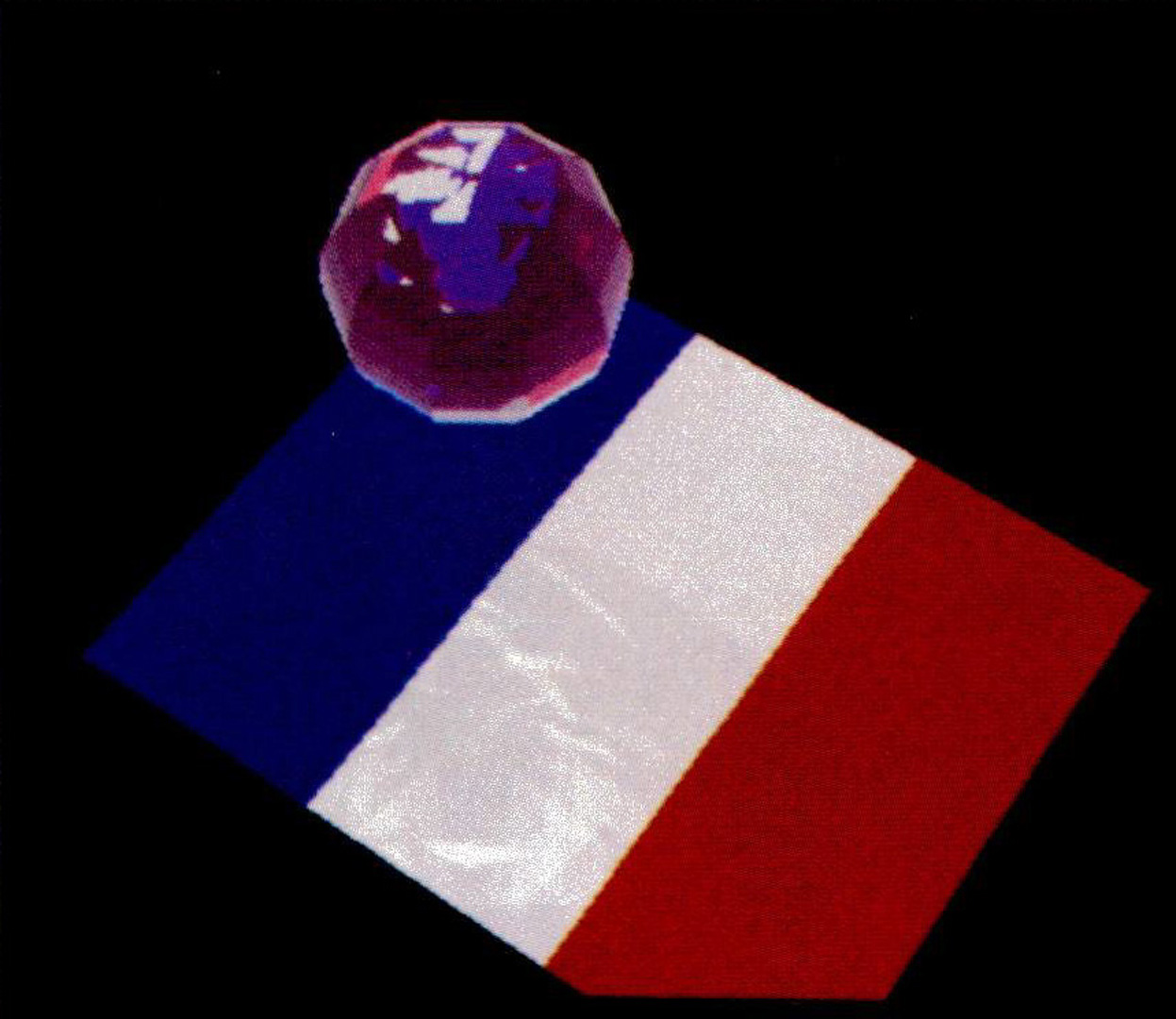“Principles and applications of pencil tracing” by Shinya, Takahashi and Naito
Conference:
Type(s):
Title:
- Principles and applications of pencil tracing
Presenter(s)/Author(s):
Abstract:
Pencil tracing, a new approach to ray tracing, is introduced for faster image synthesis with more physical fidelity. The paraxial approximation theory for efficiently tracing a pencil of rays is described and analysis of its errors is conducted to insure the accuracy required for pencil tracing. The paraxial approimation is formulated from a 4×4 matrix (a system matrix) that provides the basis for pencil tracing and a variety of ray tracing techniques, such as beam tracing, ray tracing with cones, ray-object intersection tolerance, and a lighting model for reflection and refraction. In the error analysis, functions that estimate approximation errors and determine a constraint on the spread angle of a pencil are given.The theory results in the following fast ray tracing algorithms; ray tracing using a system matrix, ray interpolation, and extended ‘beam tracing’ using a ‘generalized perspective transform’. Some experiments are described to show their advantages. A lighting model is also developed to calculate the illuminance for refracted and reflected light.
References:
1. T.Whitted, ‘An improved illumination model for shaded display’, Comm. ACM, 23, No.6, pp.343- 349 (1980)
2. P.S.Heckbert and P. Hanrahan, ‘Beam tracing polygonal object’, Computer Graphics, 18, No.3, pp.119- 127 (1984)
3. J.Amanatides, ‘Ray tracing with cones’, Computer Graphics, 18, No.3, pp.129-135 (1984)
4. A.H.Barr, ‘Ray tracing deformed surfaces’, Computer Graphics, 20, No.4, pp.287-296 (1986)
5. M.Born and E.Wolf, Principles of Optics, pp.190- 196, New York: Pergamon, 1959
6. G.A.Deschamps, ‘Ray techniques in electromagnetics’, Proceedings of the IEEE, 60, No.9, pp.1022- 1035 (1972)
7. S.M.Rubin and T.Whitted, ‘A three dimensional representation for fast rendering of complex scenes’, Computer Graphics, 14, No.3, pp.110-116 (1980)
8. J.T.Kajiya, ‘The rendering equation’, Computer Graphics, 20, No.4, pp.143-150 (1986)
9. T.Nishita and E.Nakamae, ~Continuous tone representation of three-dimensional objects taking account of shadows and interreflection’, Computer Graphics, 19, No.3, pp.23-30 (1985)
10. R.L.Cook, T.Porter, and L.Carpenter, ‘Distributed ray tracing’, Computer Graphics, 18, No.3, pp.137- 145 (1984)





